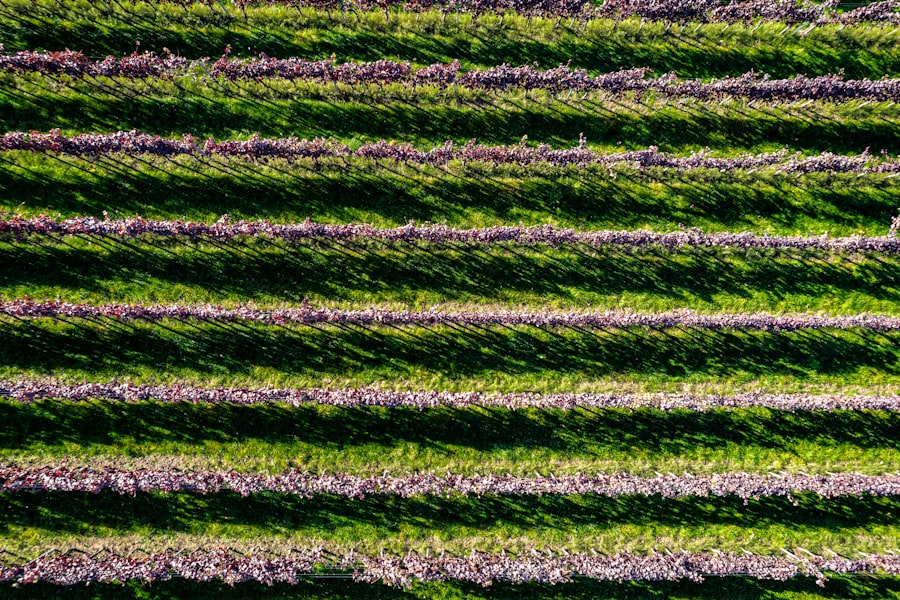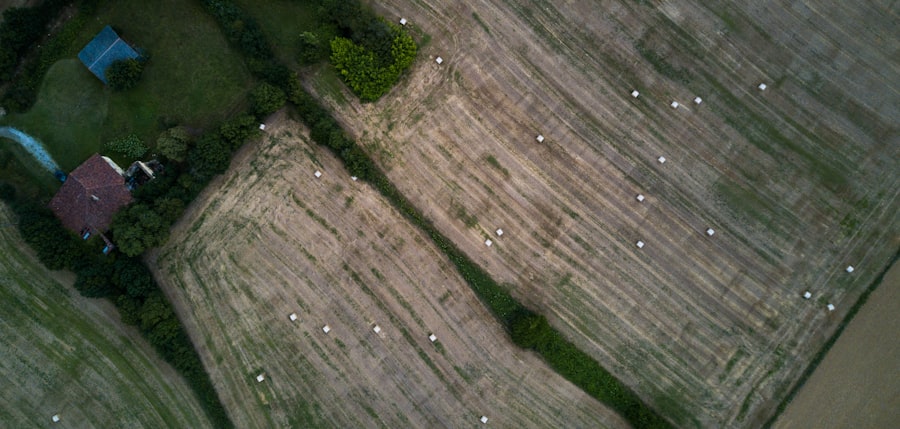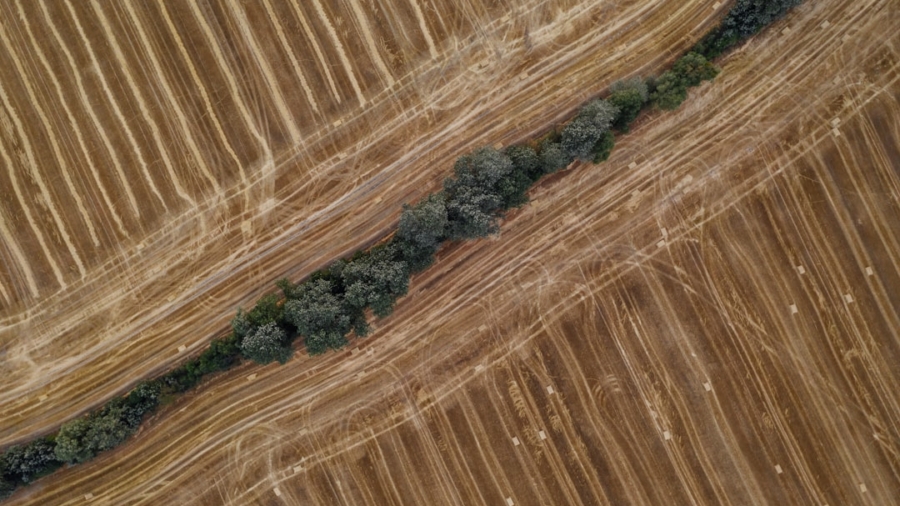The advent of drone technology has revolutionized various sectors, and agriculture is no exception. Drones, or unmanned aerial vehicles (UAVs), have emerged as a transformative tool in modern farming practices, enabling farmers to enhance productivity, optimize resource use, and make informed decisions based on real-time data. The integration of drones into agriculture is part of a broader trend towards smart farming, where technology plays a crucial role in improving efficiency and sustainability.
As the global population continues to rise, the demand for food production intensifies, necessitating innovative solutions to meet these challenges. Drones offer a unique approach to addressing these needs by providing aerial perspectives that were previously unattainable. The use of drones in agriculture is not merely a trend; it represents a significant shift in how farmers approach crop management and land use.
Equipped with advanced sensors and imaging technology, drones can collect vast amounts of data quickly and efficiently. This capability allows farmers to monitor their fields with unprecedented precision, leading to better decision-making and resource allocation. As the agricultural sector grapples with issues such as climate change, soil degradation, and water scarcity, the adoption of drone technology is becoming increasingly vital for sustainable farming practices.
Key Takeaways
- Drones are revolutionizing agriculture by providing farmers with advanced tools for precision farming and crop management.
- The use of drones in smart agriculture offers benefits such as increased efficiency, reduced costs, and improved crop yields.
- Drones are being used in precision farming for applications such as soil and field analysis, crop monitoring, and pest management.
- Drones play a crucial role in crop monitoring and management by providing real-time data on crop health, growth, and potential issues.
- In smart agriculture, drones are utilized for irrigation management and soil analysis, allowing for optimized water usage and improved soil health.
Benefits of Using Drones in Smart Agriculture
One of the primary benefits of utilizing drones in agriculture is the ability to gather high-resolution aerial imagery that provides insights into crop health and field conditions. This data can be analyzed to identify areas of stress or disease, enabling farmers to take timely action before problems escalate. For instance, multispectral cameras mounted on drones can capture images that reveal variations in plant health by detecting differences in light reflectance.
This information allows farmers to apply fertilizers or pesticides more precisely, reducing waste and minimizing environmental impact. Additionally, drones facilitate efficient monitoring of large agricultural areas that would be time-consuming and labor-intensive to inspect manually. Traditional methods of crop scouting often require significant manpower and can be prone to human error.
In contrast, drones can cover vast expanses of land in a fraction of the time, providing comprehensive data that enhances overall farm management. This efficiency not only saves time but also reduces labor costs, allowing farmers to allocate resources more effectively.
Applications of Drones in Precision Farming

Precision farming is an agricultural management concept that uses technology to monitor and manage field variability in crops. Drones play a pivotal role in this approach by enabling precise applications of inputs such as water, fertilizers, and pesticides. For example, through the use of drone technology, farmers can create detailed maps of their fields that highlight variations in soil composition and moisture levels.
This information allows for site-specific management practices that optimize input usage based on the unique needs of different areas within a field. Moreover, drones equipped with thermal imaging sensors can assess plant health by measuring temperature variations across a field. Healthy plants typically exhibit different thermal signatures compared to stressed or diseased plants.
By identifying these variations early on, farmers can implement targeted interventions that improve crop yields and reduce input costs. The ability to apply resources precisely not only enhances productivity but also contributes to sustainable farming practices by minimizing excess application that can lead to environmental degradation.
Role of Drones in Crop Monitoring and Management
Crop monitoring is one of the most significant applications of drone technology in agriculture. Drones can be deployed at various stages of the growing season to monitor crop development, assess plant health, and evaluate overall field conditions. By capturing images at different growth stages, farmers can track changes over time and make informed decisions regarding irrigation, fertilization, and pest control.
For instance, if a drone reveals that certain areas of a field are underperforming compared to others, farmers can investigate further and adjust their management practices accordingly. In addition to monitoring crop health, drones can also assist in managing crop growth through timely interventions. For example, if a drone identifies areas affected by pests or diseases, farmers can respond quickly with targeted treatments rather than applying chemicals across an entire field.
Furthermore, drones can help monitor the effectiveness of these interventions by providing follow-up imagery that assesses recovery or ongoing issues.
Use of Drones in Irrigation and Soil Analysis
Irrigation management is another critical area where drones are making a significant impact. Drones equipped with multispectral sensors can assess soil moisture levels across a field, providing valuable insights into irrigation needs. By identifying areas that require more or less water, farmers can optimize their irrigation systems to ensure that crops receive adequate moisture without overwatering.
This precision not only conserves water resources but also promotes healthier plant growth by preventing waterlogging or drought stress. Soil analysis is equally important for effective crop management, and drones can play a vital role in this process as well. By capturing high-resolution images and using advanced algorithms, drones can help create detailed soil maps that reveal variations in soil composition and nutrient levels.
This information allows farmers to tailor their fertilization strategies based on specific soil needs rather than applying uniform treatments across an entire field. Such targeted approaches enhance soil health and contribute to sustainable agricultural practices by reducing chemical runoff and improving nutrient cycling.
Integration of Drones with Other Smart Agricultural Technologies

The integration of drones with other smart agricultural technologies amplifies their effectiveness and expands their capabilities. For instance, when combined with Geographic Information Systems (GIS), drones can provide detailed spatial analysis that enhances decision-making processes. GIS technology allows farmers to visualize data collected by drones in relation to other factors such as weather patterns, historical yield data, and market trends.
This holistic view enables more informed planning and resource allocation. Moreover, drones can be integrated with Internet of Things (IoT) devices to create a comprehensive smart farming ecosystem. IoT sensors placed throughout fields can monitor real-time conditions such as temperature, humidity, and soil moisture levels.
When combined with drone data, farmers gain a deeper understanding of their fields’ dynamics, allowing for proactive management strategies that respond to changing conditions. This synergy between drones and IoT devices exemplifies the potential for technology-driven agriculture to enhance productivity while promoting sustainability.
Challenges and Limitations of Using Drones in Agriculture
Despite the numerous advantages that drones offer in agriculture, several challenges and limitations must be addressed for widespread adoption. One significant hurdle is regulatory compliance; many countries have strict regulations governing drone usage, particularly concerning airspace restrictions and safety protocols. Farmers must navigate these regulations to ensure they operate within legal boundaries while maximizing the benefits of drone technology.
Another challenge lies in the initial investment required for drone technology and associated software systems. While prices have decreased over the years, acquiring high-quality drones equipped with advanced sensors can still represent a substantial financial commitment for many farmers. Additionally, there is a learning curve associated with operating drones effectively and interpreting the data they collect.
Farmers may require training or support to fully leverage drone technology’s capabilities, which could pose barriers for those less familiar with digital tools.
Future Outlook for Drones in Smart Agricultural Technologies
The future outlook for drones in smart agricultural technologies appears promising as advancements continue to emerge at a rapid pace. As drone technology evolves, we can expect improvements in sensor capabilities, flight times, and data processing algorithms that will enhance their utility in agriculture even further. For instance, developments in artificial intelligence (AI) may enable drones to analyze data autonomously and provide actionable insights without requiring extensive human intervention.
Moreover, as global challenges such as climate change and food security intensify, the demand for innovative agricultural solutions will likely drive further investment in drone technology. Collaborative efforts between tech companies and agricultural stakeholders may lead to the development of specialized drones tailored for specific farming needs or crops. This evolution could result in more efficient farming practices that not only boost productivity but also promote environmental stewardship.
In conclusion, the integration of drones into agriculture represents a significant leap towards smarter farming practices that harness technology’s potential to address pressing global challenges. As farmers continue to adopt these tools and overcome existing barriers, the role of drones in shaping the future of agriculture will undoubtedly expand, paving the way for more sustainable and efficient food production systems worldwide.
In a recent article on

